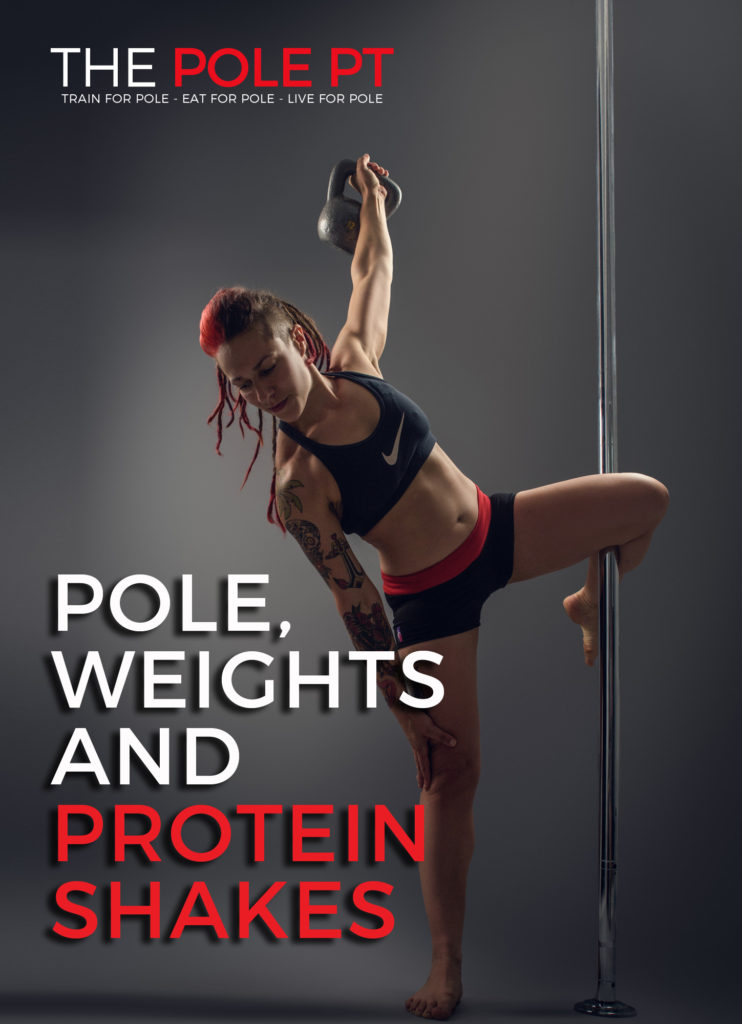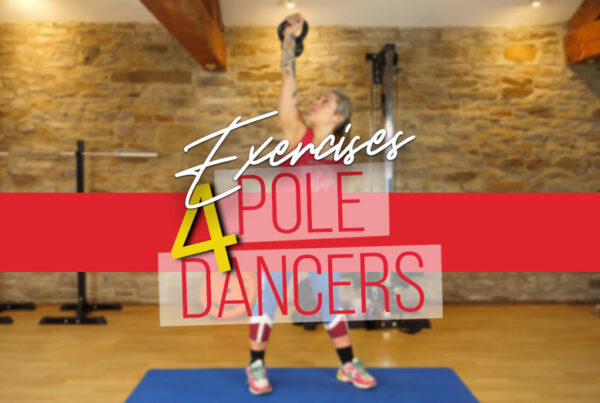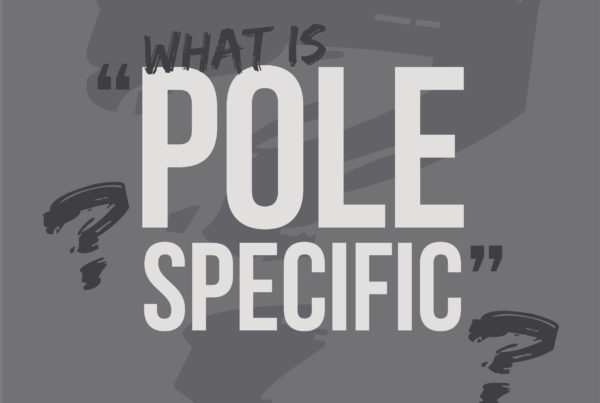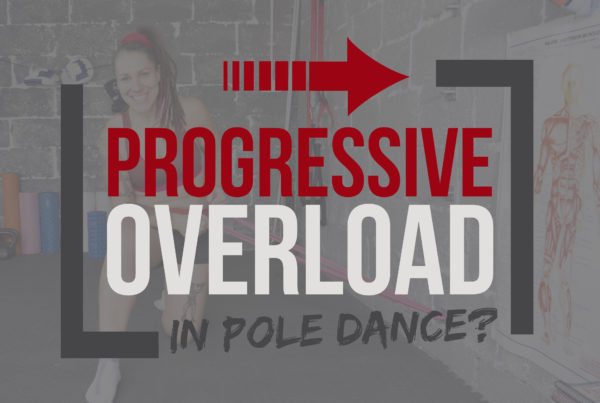Walk into any gym—whether it’s a traditional clanking bodybuilding hangout, a spit and sawdust powerlifter’s paradise or a ‘go hard or go home’ CrossFit box—and I guarantee that between the clatter of metal-on-metal and the testosterone fuelled grunts of effort, you’ll hear the unmistakable sound of a mixing ball being vigorously bashed about inside a protein shaker.
Bodybuilders and weight lifters are exposed early-on in their training lifestyle to the nutrition side of strength training (even if it may be of the bro-science variety).
‘Whey Protein’, ‘BCAAs’, ‘Glutamine’ and ‘Anabolic window’ – these are all every day words in gym culture.
But protein shakes in the pole studio? It’s not something you see (or hear) all that often.
Polers need protein just as much as powerlifters
As far as your body is concerned, strength training in the gym is no different to strength training on the pole and our bodies need protein for growth, maintenance and repair.
If you aren’t getting enough protein in your diet, it can reduce your athletic performance, slow down your recovery from training and even lower your immunity levels. It can cause fatigue, lead to overtraining and ultimately impair muscle growth, which is bad news for strength gains and overall body composition.
Just like powerlifters using protein to repair their muscles after a heavy lifting session, we polers need to ensure we’re eating enough protein to fuel our pole training and repair our muscles in order to continue growing and getting stronger on the pole.
But should you be chain-eating chicken breasts and gulping down raw egg smoothies like Popeye downs spinach?
 How much protein to fuel your pole obsession?
How much protein to fuel your pole obsession?
I get asked the protein question allllll the time and at the risk of sounding like the irritating caveat-loving lawyer that I used to be (yes, I really was a solicitor pre-pole life), let me first say this:
There is no single, conclusive answer to this question. How much protein you need depends on lots of different variables, including how active you are, what sort of training you’re doing, your body weight, your lifestyle, your dietary preferences and your training goals.
Buuut… that’s not to say there aren’t some general guidelines you can follow.
It can all get a bit technical. Because most polers reading this probably won’t know what their ‘lean body mass’ is (you can only work this out with a body fat percentage calculation), and I don’t know whether you are trying to gain weight, lose weight or keep your body composition exactly as it is, I’m going to simplify things for the purposes of this blog post and give you some general protein recommendations based on total bodyweight, which is just as a good a starting point as any if you are new to all of this.
Protein for pole dancers
The widely used ‘recommended daily allowance’ for protein intake is around 0.8g to 1g of protein per kg of bodyweight.
However, this recommendation is for those who live a sedentary life. You know – those folk who are stuck staring blankly at a computer screen all day and then spending their evenings creating a Homer Simpson-style butt shaped imprint on the couch.
You, my pole loving friend, are not a ‘sedentary’ individual. You are a pole dancer! You forgo the call of your extra-wide, contemporary grey, corduroy corner sofa and hit the pole studio of an evening, so that recommendation probably doesn’t apply to you. No, Sir!
If you are pole training regularly, your body will need more protein than the standard RDA in order to recover and repair the tissues from training.
The usual advice for regular exercisers is generally between 1.2 – 1.8g of protein per kg of bodyweight every day, sometimes higher.
The higher end of that range (1.6 to 1.8g) is aimed at those doing strength training, with the lower end (1.2 to 1.4g) for those focusing on endurance training. For elite athletes, protein intake recommendation can be as high as 2.2g per kg of bodyweight, or more.
Now bear with me here…
Pole training (depending what you’re working on), usually involves a combination of both strength and endurance training. If you’re working on a floor routine for 90mins, getting maybe a little out of breath and sweaty, you’re probably training more on the endurance side of things, but if you’re spending your training time trying a rock hard new move or combo, having to rest for a minute or two before wiping the pole down and getting back up for another go, you’re more likely in the strength training ball park.
…I told you it could all get a bit technical!
But don’t despair! I’ve created the table below to help you decide whereabouts on that scale you fall.
As most people who read my blog are women, and women tend to have a higher body fat percentage than men, I’ve kept the upper end of this at 1.8g of protein per kg of bodyweight although I should say that some people (especially if trying to lose weight whilst maintaining / building muscle) might benefit from a higher protein intake.
| 1.2g – 1.4g of protein per kg of bodyweight | 1.6g – 1.8g of protein per kg of bodyweight |
| You’re doing regular but ‘light’ pole training – maybe you’re attending around 3 beginner to intermediate group classes each week with no specific training goal (other than maybe nailing that awkward as hell inside leg hang). Maybe you do a bit of cardio on the side. | You’re doing regular intense pole training, working specifically towards advanced moves and combos or training for a competition. Maybe you’re doing regular strength training in the gym too. |
| You have a moderate to high body fat percentage. | You have a low percentage of body fat. |
| You don’t want to gain muscle. | You want to build more muscle (or keep the muscle you have whilst losing fat). |
| You’re not strictly dieting. | You’re dieting to lose body fat and are restricting calories. |
Remember – an exact science it ain’t! These figures merely allow you to take an educated guess as to your protein requirements.
It’s a starting point and from there, you can monitor your energy levels, your recovery levels and tweak your diet to find what works for your training schedule and any aesthetic goals you might have.
What protein to eat?
Now you’ve thought about how much protein you should be eating every day, the next question is obvious – what exactly should you be eating to hit that target?
Firstly, be aware that some protein sources are better than others. There is a whole ranking system but I won’t get into that here. All you need to know is that some proteins are easier for your body to digest and use than others.
In this context, eggs and whey protein are the best. Meat, fish, cheese, milk and yogurt are all considered quality sources of protein, too.
Secondly, you should know that protein is made from 20 amino acids. Nine of those amino acids are “essential” (the body is unable to produce them naturally, so we must obtain them from our diet). Foods have different combinations of those amino acids and some plant based foods (like beans and legumes) don’t include all of those essential amino acids, so to include them all in our diet, it is important (especially for vegans and vegetarians) to eat a wide variety of different protein sources.
Basically, don’t be the ‘fish and a rice cake’ guy…
Sorry, I’ve been waiting for a chance to segue that clip into a blog for sooo long. Never gets old. And fair play to the dude in that clip as apparently he went on to become a pretty successful bodybuilder!
Anyway, I digress! As I say, you won’t go too far wrong if you include a decent range of different protein sources. I’ve included a little list below showing the typical protein content of some of the most common high-protein foods.
The following is a guideline only and the figures are taken from The Men’s Health Lean Muscle Diet written by Lou Schuler and Alan Aragon.
| Food | Portion size | Protein |
| Ground beef (95% lean) | 100g | 26.3 |
| Sirloin steak | 100g | 30.8 |
| Cheddar cheese | 2 slices (60g) | 18g |
| Cottage cheese 1% milk fat | 227g | 28g |
| Egg (hard boiled or poached) | 3 x large eggs | 18.9 |
| Tinned tuna | 100g | 25.5 |
| Greek yogurt (fat free) | 224g | 20g |
| Salmon | 100g | 22.1 |
| Chickpeas | 164g | 14.5 |
| Hummus | 162g | 12.8 |
| Cashew nuts | 100g | 13.9 |
| Lentils | 198g | 17.6 |
What about protein supplements?
This really comes down to personal preference. If you can get all your protein requirements from food you eat with a knife and fork then there’s really no need to start chugging down protein shakes.
Most people won’t struggle to get the protein they need from eating meat, eggs etc, but if you’re a plant-based eater and/or you just enjoy the convenience and accuracy of protein shakes then go for it.
My advice when it comes to choosing a protein powder:
- Always use a trusted brand.
- If you’re okay with dairy, go for ‘whey’ protein (it’s produced during the pasteurisation and treatment of milk). There are hemp/rice/pea protein options too, if you are plant-based.
- Always check what else is in there – some protein powders are intended as ‘meal replacements’ and include other things like sugar and sweeteners. Look for minimal ingredients (basically, the least amount of crap, the better!).
Of course, your diet consists of more than just protein. How you balance your protein intake with other macronutrients (i.e. fat and carbs) and your overall calories is important too. I will try and cover more of that in another blog post but, for now, I hope this has given you some insight into working out your protein requirements as a pole dancer. Stay awesome!
As always, if you have any questions please just let me know!
If you want to learn more about eating to support your pole training, my book Strength and Conditioning for Pole includes a whole chapter on nutrition and how we can eat to better support our pole goals. Available now in hard copy or ebook: Strength and Conditioning for Pole – the Book!








